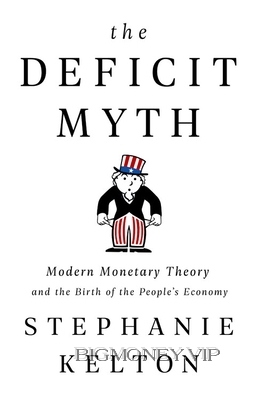
1
Don’t Think of a Household
Families across the country are tightening their belts and making
tough decisions. The federal government should do the same.
—PRESIDENT OBAMA, STATE OF THE UNION ADDRESS, 2010
MYTH #1: The federal government should budget like a
household.
REALITY: Unlike a household, the federal government issues
the currency it spends.
Like many of you, I grew up watching the television show Sesame Street.
One of the skills it helped young kids develop was the ability to sort objects
according to their similarities and differences. “One of these things is not
like the other one,” the song began as this segment of the show started. Four
images appeared in a matrix on the screen: a banana, an orange, a
pineapple, and a sandwich. “The sandwich! The sandwich!” my sister and I
would holler back at the TV set. I’m no longer a kid, but I still find myself
hollering back at the TV whenever I hear someone talk about the federal
government’s budget as if it were no different from a household budget.
If you’ve heard someone complain that Washington needs to get its
fiscal house in order, you’ve heard a version of the household myth. It
derives from the flawed idea that we should look at Uncle Sam’s budget
through the same lens we use to manage our own family budgets. Of all the
myths we’re going to explore in the pages ahead, this is undoubtedly the
most pernicious.
It’s a favorite among politicians, who tend to look for the simplest
possible rhetoric to connect with their constituents. And what could be
easier than describing the government’s finances in terms the rest of us
already understand—our own. We all know it’s important to keep our
personal spending in line with our overall income. So, when we hear
someone come along and talk about government finances in ways that
remind us of our own, it hits home. It’s got a folksy, kitchen-table feel to it.
We’ve all seen it done. In campaign ads and town halls across America,
politicians point to the small businessman or the hardworking waitress,
holding them up as shining examples of what responsible budgeting looks
like. They empathize with the struggles of everyday Americans, reminding
us that we all know what it’s like to sit around the kitchen table and balance
the family checkbook. Then, in the hope of drawing outrage from the
crowd, they shift the conversation to the federal government, telling us that
Uncle Sam’s books almost never balance because irresponsible spending
has become a way of life in Washington, DC.
Stories like these resonate with us because the language is so familiar.
We know that we’re supposed to live within our means and arrange our
finances so that we aren’t spending more than we bring in. We know we
need to set aside some savings for the future and that we should be extra
careful when it comes to borrowing money. Taking on too much debt can
lead to bankruptcy, foreclosure, and even incarceration.
We know people can go broke, and we’ve seen iconic companies like
RadioShack and Toys “R” Us get driven into bankruptcy when they could
no longer afford to pay the bills. Even cities (Detroit) and states (Kansas)
can run into big trouble when they’re not bringing in enough money to
cover their expenses. Every family sitting around the kitchen table
understands these realities. What they don’t understand is why the federal
government (Uncle Sam) is different.
To understand why, we go right to the heart of MMT.
Issuers Versus Users of Currency
The Deficit Myth: Modern Monetary Theory and the Birth of the People’s Economy by Stephanie Kelton




